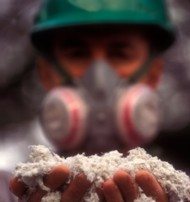The Persistence of Mesothelioma in a Post-Asbestos Era

Mesothelioma is a type of cancer caused by exposure to a harmful mineral called asbestos. It takes decades for mesothelioma to develop after exposure, showing a slow cancer process. Scientists have been working hard to understand how asbestos leads to this disease and find new ways to treat it.
The Impact of Asbestos Regulations
In the 1980s and early 90s, strict rules were put in place in many Western countries to limit or completely ban the use of asbestos. These measures have been successful in reducing the number of new mesothelioma cases. However, the total number of mesothelioma cases has not decreased significantly.
In the United States, the total number hasn’t dropped due to an increasing population. There are a few reasons why mesothelioma cases have not decreased as much as we expected. Many older buildings still contain asbestos, posing a risk to those who come into contact with it.
And as the population grows older, the risk of developing all types of cancer, including mesothelioma, gets higher.
While banning asbestos was an important step, there are still challenges to face. Identifying people with genetic mutations and developing targeted treatments can make a big difference.
In developing countries, where asbestos use is rising, mesothelioma cases may increase. Challenges in diagnosing and reporting cases make it hard to know the exact numbers. To prevent a mesothelioma epidemic, it’s crucial for these countries to adopt similar protective measures against asbestos as countries like the United States.
Source
Carbone M, Minaai M, Takinishi Y, Pagano I, Yang H. Preventive and therapeutic opportunities: targeting BAP1 and/or HMGB1 pathways to diminish the burden of mesothelioma. J Transl Med. 2023;21(1):749. Published 2023 Oct 25. doi:10.1186/s12967-023-04614-5. https://www.ncbi.nlm.nih.gov/pmc/articles/PMC10599047





